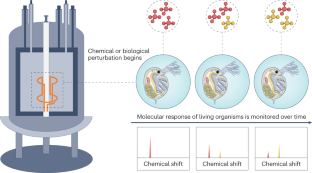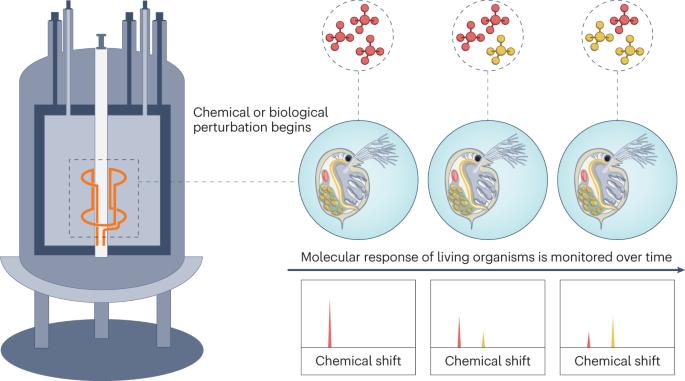In vivo NMR spectroscopy
IF 56
Q1 MULTIDISCIPLINARY SCIENCES
引用次数: 0
Abstract
Understanding biological processes at the molecular level is a pillar of modern science, and unique insight can be gained by studying living organisms in real time. As a non-destructive and non-targeted technique, NMR spectroscopy is uniquely capable of characterizing the chemical profile of living organisms during biochemical processes or in response to an applied stressor. In vivo NMR spectroscopy — the study of living organisms by NMR — is discussed here, including the most common and state-of-the-art experimental approaches spanning both solution-state and magic-angle spinning NMR. Key information that can be obtained and important applications — primarily monitoring biochemical processes such as growth and stress responses — are also examined. To date, in vivo NMR has been used in metabolomics studies of microorganisms, plants and invertebrates but it also has potential for medical and pharmaceutical research. Current limitations, best practices for reproducibility and optimizations are also described, including experiments and technologies capable of improving in vivo analysis. This Primer is designed to form a solid foundation for those looking to better understand or incorporate in vivo NMR studies into their own research as well as to shed light on the future of in vivo NMR. In vivo NMR spectroscopy of whole, living multicellular organisms involves maintaining live organisms within an NMR spectrometer and analysing their metabolic profiles in real time. In this Primer, Lysak and colleagues describe experimental approaches for in vivo NMR, including solution-state and magic-angle spinning NMR.


体内核磁共振光谱学
在分子水平上了解生物过程是现代科学的支柱,而通过实时研究生物体可以获得独特的见解。作为一种非破坏性和非靶向技术,核磁共振波谱学具有独特的能力,能够描述生物体在生化过程中或对施加的压力做出反应时的化学特征。本文讨论了活体 NMR 光谱--通过 NMR 对生物体进行的研究,包括跨越溶液态 NMR 和魔角自旋 NMR 的最常见和最先进的实验方法。此外,还探讨了可获得的关键信息和重要应用(主要是监测生长和应激反应等生化过程)。迄今为止,体内 NMR 已用于微生物、植物和无脊椎动物的代谢组学研究,但它在医学和制药研究方面也具有潜力。本手册还介绍了目前的局限性、可重复性的最佳实践和优化方法,包括能够改进体内分析的实验和技术。本入门指南旨在为那些希望更好地了解体内 NMR 研究或将其纳入自身研究的人员奠定坚实的基础,并为体内 NMR 的未来发展提供启示。
本文章由计算机程序翻译,如有差异,请以英文原文为准。
求助全文
约1分钟内获得全文
求助全文

 求助内容:
求助内容: 应助结果提醒方式:
应助结果提醒方式:


